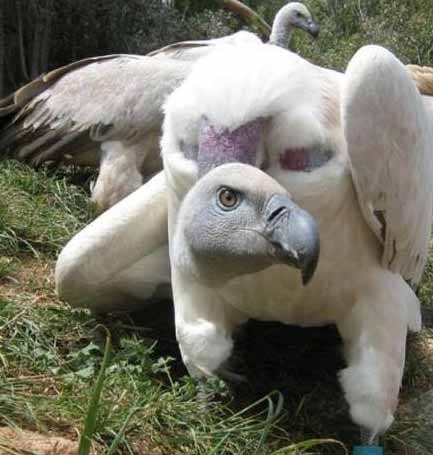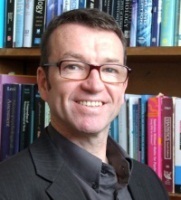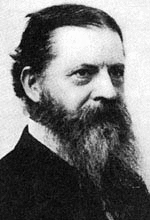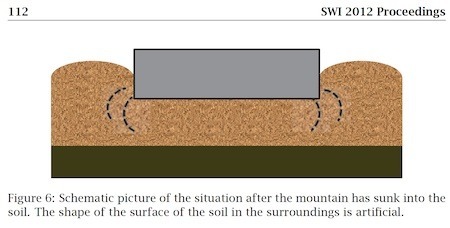Marc Abrahams's Blog, page 467
September 1, 2013
A ghoulishly cheerful Improbable book cover
The new China edition (ISNB 978-7-308-11141-6) of the book The Best of Annals of Improbable Research (ISNB 978-0716730941) has a ghoulishly cheerful cover:
BONUS: The China edition (ISBN 978-7-308-10345-9) of the book The Ig Nobel Prizes (ISBN 978-0452285736):

August 31, 2013
Mathematics of Repulsive Behavior in an Exceptional Family
Mathematics sometimes is all about family. Here is one of those times:
“Repulsive Behavior in an Exceptional Family,” Jeffrey Stopple, arXiv:1108.6272, August 31, 2011. Stoppel, at the University of California, Santa Barbara, writes, using the royal “we”:
“The existence of a Landau-Siegel zero leads to the Deuring-Heilbronn phenomenon, here appearing in the 1-level density in a family of quadratic twists of a fixed genus character L-function. We obtain explicit lower order terms describing the vertical distribution of the zeros, and realize the influence of the Landau-Siegel zero as a resonance phenomenon.”

Teaser for the 23rd first annual Ig Nobel Prize ceremony
Daniel Rosenberg, Al Crockett, and David Kessler made this teaser for the 23rd First Annual Ig Nobel Prize ceremony:
Daniel and Al made a teaser last year, too:

Historical: Swordswallowing and herring farts in Denmark
Danish TV2‘s “Go’ Aften Danmark” program welcomed two Ig Nobel Prize winners for a live interview. In this historic recording, the program’s host interviews Ig Nobel Prize winners Dan Meyer (2007 prize in medicine for co-authoring the medical study “Swordswallowing and Its Side Effects”) and Magnus Wahlberg (2004 prize in biology for co-discovering that herrings apparently communicate by farting). This video was recorded in 2009, during the first Ig Nobel tour of Denmark.

August 30, 2013
Vulture Day 2013
 • This year’s International Vulture Awareness Day is set for September 7th.
• This year’s International Vulture Awareness Day is set for September 7th.
• More than 50 organisations across the globe will be participating in the event.
• Full details available from VultureDay.org

August 29, 2013
The Dutch mountain problem
The rain in the Netherlands happens mainly on the plain. Everything in the Netherlands happens mainly on the plain, because the Netherlands is nothing but plain (in the geographical sense). Mathematicians, some of them, enjoy a large challenge. Thus this study:
“Up and Beyond – Building a Mountain in the Netherlands,” Paulo J. De Andrade Serra, Tasnim Fatima, Andrea Fernandez, Tim Hulshof, Tagi Khaniyev, Patrick J.P. van Meurs, Jan-Jaap Oosterwijk, Stefanie Postma, Vivi Rottschäfer, Lotte Sewalt, Frits Veerman, Proceedings of the 84th European Study Group, Mathematics with Industry, SWI 2012, Eindhoven, January 30 – February 3, 2012, pp. 104-125. (Thanks to investigator Kurt Verkest for bringing this to our attention.) The authors report:
“We discuss the idea of building a 2 km high mountain in the Netherlands. In this paper, we give suggestions on three important areas for the completion of this project. Issues like location, structure and sustainability are investigated and discussed in detail.
“The Netherlands does not have any tall mountains. Indeed, its name even derives from the fact that it is essentially flat. According to Thijs Zonneveld, a journalist and former professional cyclist, this is a serious shortcoming of his country. As a possible remedy, he proposed building a 2 kilometer high mountain in the Netherlands. The response was immense. Immediately, there was a lot of excitement at the prospect of building a mountain, but also a fair amount of skepticism about whether it can actually be done. In this report we aim to address some of the obstacles and opportunities that may arise in the construction of such a mountain.”
Here is a detail from the study:
Further info: (1) Bartels discusses the theory, and (2) the web site for the project to build the mountain.

August 28, 2013
Legal scholarship: a stuffed bear, Satan, an ass, and an ax
Some further items from the Lowering the Bar blog’s collection of legal cases worth pondering, if not studying [that's our description, not necessarily Lowering the Bar's, though not necessarily not, either]:
Pardue v. Turnage (La. App. 1980) (“An exhaustive reading of the entire record convinces this court that Kenneth Turnage did give his stuffed bear to the Lessards. For the trial court to find otherwise was manifest error.”).
People v. Foranyic (Cal. Ct. App. 1998) (ruling that there was probable cause for police to detain someone they see riding a bike at 3 a.m., carrying an axe).
Stambovsky v. Ackley (N.Y. 1991) (holding that a homebuyer could seek recission of sale contract based on his claim that he did not know house was allegedly haunted by poltergeists; based on estoppel, court ruled that “as a matter of law, the house is haunted”).
United States ex rel. Mayo v. Satan and His Staff (W.D. Pa. 1971) (dismissing case against Satan and unidentified staff members for lack of jurisdiction and uncertainty as to whether case could properly be maintained as a class action).
Washington v. Alaimo (S.D. Ga. 1996) (ordering plaintiff to show cause why he should not be sanctioned for “filing a motion for improper purposes,” such as those hinted at in the title of the pleading, “Motion to Kiss My Ass.”)
In re Marriage of Gustin (Mo. App. 1993) (holding that wife’s chopping through door of marital residence with a hatchet was not “marital misconduct” sufficient to affect distribution of property).

“Swearing – the Language of Life and Death”
 Richard Stephens has published a life and death account of research about swearing:
Richard Stephens has published a life and death account of research about swearing:
“Swearing – the Language of Life and Death,” Richard Stephens, The Psychologist, vol. 26, pt. 9, September 2013, pp. 650-653.
In 2010, Professor Stephens and two of his students were awarded the Ig Nobel Peace Prize. The citation reads:
Richard Stephens, John Atkins, and Andrew Kingston of Keele University, UK, for confirming the widely held belief that swearing relieves pain.
[REFERENCE: “Swearing as a Response to Pain,” Richard Stephens, John Atkins, and Andrew Kingston, Neuroreport, vol. 20 , no. 12, 2009, pp. 1056-60.

Misinterpretable study title of the week: Eye Extraction
This week’s Misinterpretable Study Title of the Week is …
‘Extraction of Eyes for Facial Expression Identification of Students.’ The paper, in the International Journal of Engineering Science and Technology (IJEST), 2(7), 3024 – 3029. is authored by
Dr. G.Sofia M.C.A,M.Phil.,(Ph.D) and Professor Dr. M.Mohamed Sathik, M.Sc., M.Phil., M.B.A., M.Tech., M.S., Ph.D. whom we recently featured for their study of ‘Emotional Gauging of Students via Forehead Wrinkle Extraction.’

August 27, 2013
mini-AIR August issue: Tuma on Tumors, etc.
 The August issue of mini-AIR (our monthly newsletter — it’s a wee little supplement to the magazine) just went out. You can read it online, too. Topics include:
The August issue of mini-AIR (our monthly newsletter — it’s a wee little supplement to the magazine) just went out. You can read it online, too. Topics include:
Tuma on Tumors
Something is Lacking in Amusia
Dissolved Air Flotation and Him Limerick Competition
and more
It also has info about upcoming events.
Mel [pictured here] says, “It’s swell.”
mini-AIR is the simplest way to keep informed about Improbable and Ig Nobel news and events. Just add yourself to the mini-AIR list, and mini-AIR will be emailed to you every month.

Marc Abrahams's Blog
- Marc Abrahams's profile
- 14 followers






